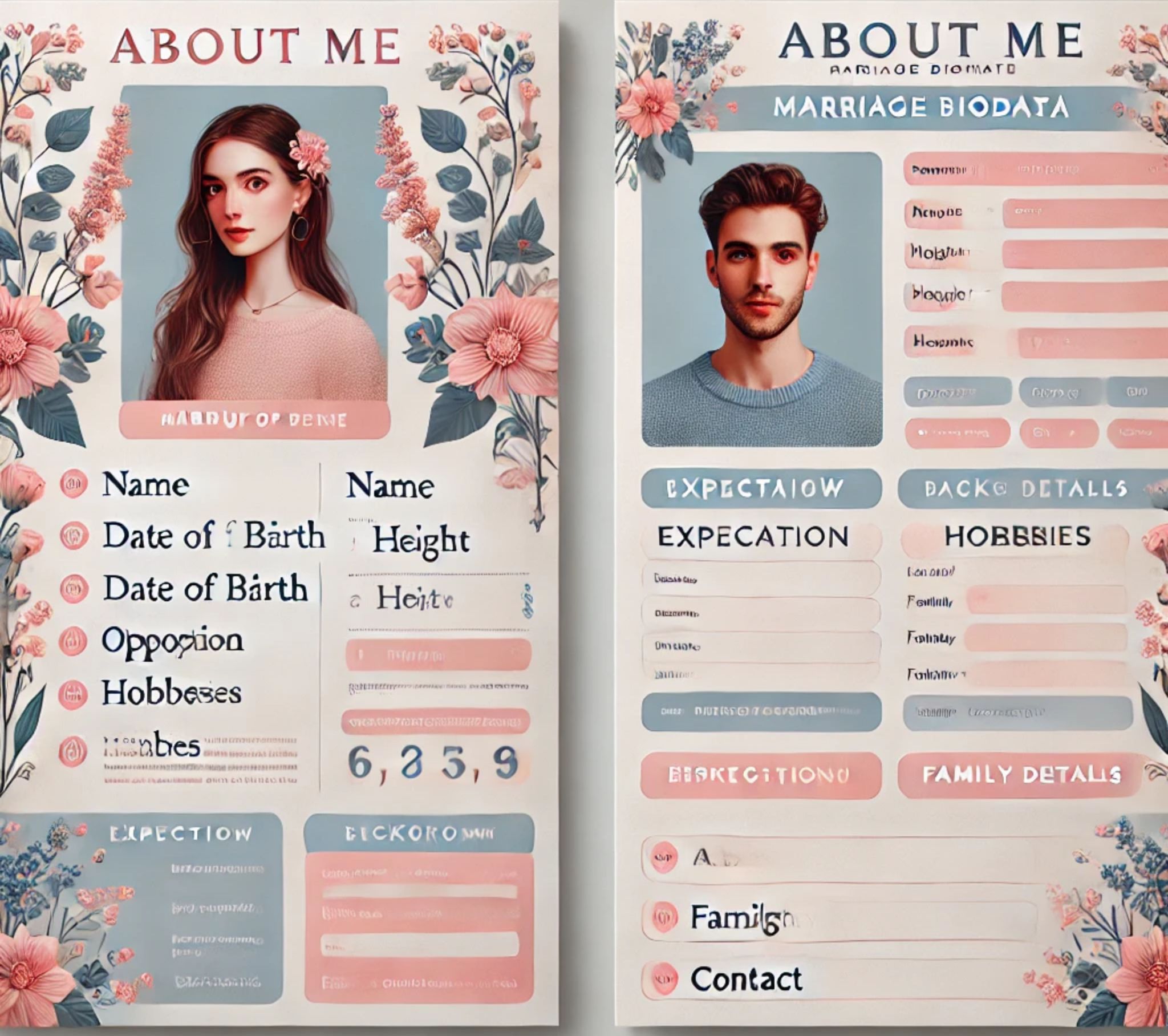Shadi Biodata Format Guide for Indian Marriages

Strong 8k brings an ultra-HD IPTV experience to your living room and your pocket.
In India, marriage is not just a union of two individuals—it’s a sacred bond that unites two families, traditions, and often generations. Among the first steps in this deeply rooted cultural process is the exchange of a shadi biodata—a personal document summarizing the essential facts about a potential bride or groom. Whether you're relying on traditional matchmaking, matrimonial sites, or word-of-mouth recommendations, having a well-structured biodata can significantly improve your chances of finding the right match.
This guide provides a comprehensive overview of the ideal shadi biodata format, offering tips, best practices, and must-have sections to help you create a clear, professional, and culturally appropriate profile.
What is a Shadi Biodata?
A shadi biodata is a document that contains concise personal, family, educational, and professional details about an individual who is seeking marriage. Unlike a resume or a CV, which highlight career milestones, a marriage biodata reflects personality traits, lifestyle preferences, family background, and partner expectations.
Though the style and tone may vary by region and community, the core purpose remains the same—to help families evaluate compatibility before moving on to direct communication or meetings.
Why is a Good Shadi Biodata Important?
A thoughtfully crafted shadi biodata format can leave a strong first impression on prospective families. Here’s why it matters:
Clarity and Simplicity: The clearer and more structured the biodata, the easier it is for readers to absorb important facts.
Cultural Appropriateness: Including culturally relevant information shows awareness and respect for traditions.
Professional Appeal: A neat, well-worded biodata stands out and increases your chances of serious inquiries.
Time-saving: It helps both parties make quicker decisions about compatibility, especially in arranged match scenarios.
Key Sections in a Shadi Biodata Format
To make your biodata complete and effective, it should include the following components:
1. Personal Information
This section is straightforward but essential. Include:
Full Name
Date of Birth and Age
Height and Weight
Religion and Caste (if relevant)
Mother Tongue
Nationality
Blood Group (optional but sometimes requested)
Contact Details
Make sure this section is accurate and updated, as errors here can lead to confusion later.
2. Educational Background
List your qualifications in reverse chronological order. Include:
Degree (e.g., B.Tech, M.A., MBA)
Institution Name
Year of Completion
Additional Certifications (if any)
Education is a key factor in many Indian families’ decision-making, so be honest and precise.
3. Professional Information
Highlight your current employment and career history. Include:
Current Job Title
Company Name
Location of Work
Annual Income (in INR or USD if abroad)
Previous Work Experience (optional)
This section plays an important role, particularly in urban and NRI matches. If you’re self-employed or in a family business, describe it briefly.
4. Family Background
This part reflects your upbringing, values, and social circle. Common details include:
Father’s Name and Occupation
Mother’s Name and Occupation
Siblings (with brief info about their education/job/marital status)
Family Type: Joint/Nuclear
Native Place/Ancestral Origin
Current City of Residence
Indian families give great importance to family dynamics, so present this section with pride and respect.
5. Lifestyle and Hobbies
This is your chance to share your personality. Include:
Hobbies (e.g., reading, travel, fitness, music)
Food Preferences (Veg/Non-Veg, Jain, etc.)
Drinking/Smoking Habits
Languages Spoken
This helps others assess cultural compatibility beyond academic or financial credentials.
6. Partner Preferences
Clearly define what you’re looking for in a life partner. This can include:
Age and Height Range
Education and Profession
Caste or Religious Preferences (if any)
Location Preference (India or abroad)
Lifestyle Expectations (modern/traditional balance)
Avoid being too rigid or too vague. Honest and reasonable preferences reflect maturity.
7. Photograph
Include a recent, high-resolution photo. Ideally, choose a formal or semi-formal image that reflects your best self. A clear photo helps personalize your biodata and builds trust.
Tips for Creating the Perfect Simple Biodata for Marriage
Keep it Concise: Use bullet points and short sentences.
Use Neutral Language: Avoid being overly dramatic or flowery.
Be Honest: Exaggerating details can create problems later.
Customize Slightly: Tailor your biodata slightly based on who it's being shared with.
Proofread: Check grammar and spelling before sharing.
If you want to save time, consider using online tools that offer ready-made templates for bio data for marriage simple. These platforms offer professionally designed formats that you can fill out easily, download as PDFs, and even print.
Digital Trends in Biodata Creation
Today, many individuals and families prefer preparing marriage bio data online using trusted matrimonial platforms or document generators. These digital tools allow:
Quick formatting
Mobile-friendly designs
Easy updates
Cloud storage for safety
Compatibility with matrimonial apps
Some platforms also help integrate horoscopes or Kundli matches automatically, which is a popular add-on in traditional Indian matchmaking.
Common Mistakes to Avoid
Including Too Much Personal Data: Avoid PAN numbers, Aadhaar, or other sensitive info.
Using Blurry or Casual Photos: Poor image quality can give a careless impression.
Unrealistic Partner Expectations: Keep preferences grounded and reasonable.
Overlooking Updates: If you change jobs or cities, make sure to update your biodata accordingly.
Generic Copy-Paste Language: Personalize your content to reflect your genuine self.
Final Thoughts
Creating a compelling shadi biodata format is both an art and a science. It’s not just about listing facts—it's about presenting your story in a way that reflects who you are and what you're looking for. Whether you're preparing a simple biodata for marriage for traditional matchmakers or uploading your profile on digital platforms, clarity, authenticity, and presentation matter the most.
Remember, your marriage biodata details don’t just reflect your background—they also represent your personality and values. A well-crafted biodata acts as your ambassador, speaking for you before any actual conversation begins.
Note: IndiBlogHub features both user-submitted and editorial content. We do not verify third-party contributions. Read our Disclaimer and Privacy Policyfor details.



